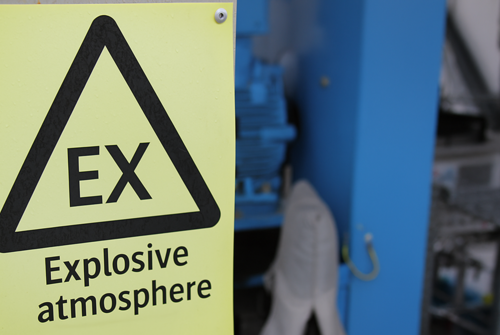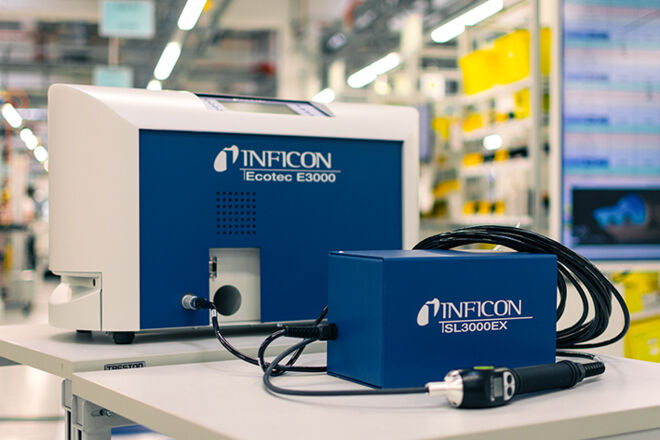Hazardous Zones and the Use of Hydrocarbons in HVACR and Automotive Manufacturing
Expert insights into the risks associated with the use of flammable refrigerants in hazardous manufacturing areas.

As the HVACR and automotive industries move toward more sustainable solutions, saturated hydrocarbons like ethane, propane (R290), and butane are increasingly being used as low-GWP (global warming potential) refrigerant alternatives. These gases offer environmental benefits but also introduce new challenges related to flammable refrigerants in the HVACR and automotive industry, particularly in terms of refrigerant leak detection and compliance with safety standards in hazardous zones.
To better understand these risks of flammable refrigerants and how manufacturers are adapting, we spoke with Johannes Brand, Leak Detection Expert and Product Owner at INFICON GmbH. He shares key insights into safe refrigerant handling in hazardous zones and how advanced technologies from INFICON like the SL3000EX sniffer line help ensure compliance and safety.
Why Manufacturers Are Turning to Flammable Refrigerants
Driven by tightening environmental regulations and growing corporate sustainability goals, manufacturers across industries are shifting toward flammable, low-GWP refrigerants.
“These alternatives offer significant environmental advantages, including compliance with new regulatory targets and improved energy efficiency. But their flammability brings a critical shift in how manufacturers must approach leak detection and system design,” explains Johannes Brand. “To address these risks, companies in the HVACR and automotive sectors are updating their processes and investing in enhanced safety protocols, particularly in areas where flammable gas could create explosive conditions.”
Despite their flammable nature, hydrocarbons remain essential across multiple industries, thanks to:
- High energy density
- Wide availability
- Critical role in industrial and chemical processes
“With the right handling, safety protocols, and leak detection systems in place, the benefits of hydrocarbons outweigh the risks,” says Brand.


What Are Hazardous Zones?
In facilities where flammable gases are handled, risk assessments are required by law in most countries. These assessments determine whether certain areas should be designated as hazardous zones and classified accordingly under international or regional standards.
When dealing with flammable substances, the most relevant classifications for hazardous zones in automotive and HVACR manufacturing are:
- Zone 2 (IEC/ATEX) – used internationally
- Class I, Division 2 (NEC/CEC) – used in North America
“Both classifications refer to areas where flammable gases may be present only under abnormal conditions, making them low risk but still subject to stringent safety requirements. Equipment used in these areas must meet specific standards to prevent any source of ignition,” clarifies Brand.
Adapting Leak Detection for Hazardous Environments
To support the safe use of flammable refrigerants, leak detection tools must evolve. Equipment operating in hazardous zones must carry international safety certifications and be explosion-proof.
The INFICON SL3000EX sniffer line is designed precisely for this purpose. The EX-version is certified for:
- ATEX Zone 2 (Europe/International)
- Class I, Division 2 (USA/Canada)
This dual certification allows Ecotec leak detectors users to operate safely and in full compliance with both international and North American regulations.
Unlike the standard sniffer line, the SL3000EX comes with an interface box that houses critical flame protection components.


The use of Ex-certified leak detection tools like the SL3000EX doesn't just enable compliance—it leads to tangible operational benefits. Manufacturers report reduced safety incidents, smoother audits and certifications, and increased confidence from customers and regulatory bodies.
By investing in the right technology, manufacturers can adopt flammable refrigerants without compromising safety, establishing themselves as reliable players in a rapidly evolving market.
Want to Know More?
Are you using flammable gases in your operations and want to learn more about leak detection with the SL3000EX sniffer line? Contact our experts.
On-Demand Webinar
Discover how to create a safer, more compliant test environment—watch our webinar on demand.